Tempest Rising is a dream RTS for Command & Conquer vets, and you can try it now
You've only got a few days, so hurry up and get into the fight.
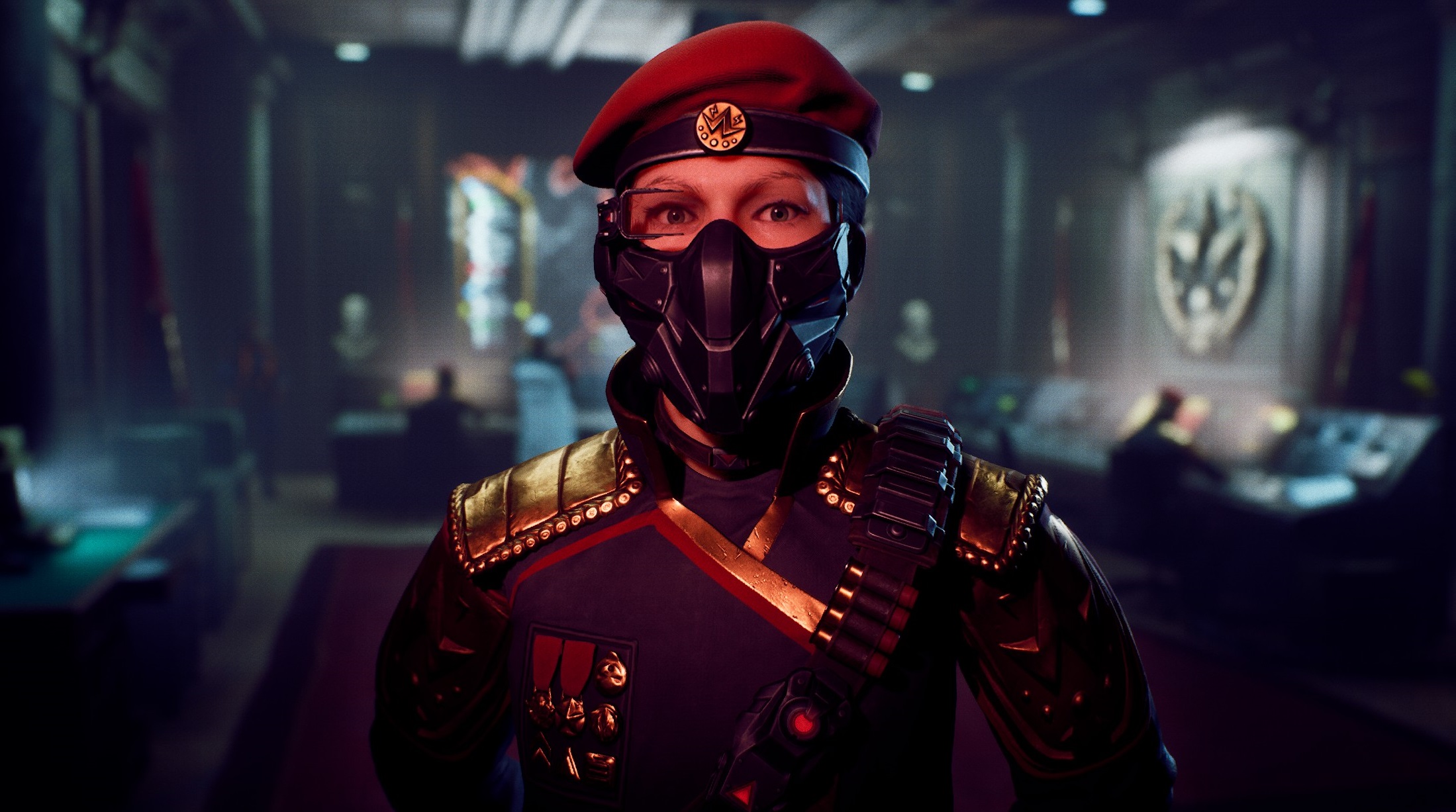
EA has spent years squandering one of its most legendary properties: Command & Conquer. Four years ago, it finally did something with it, giving us the excellent Remastered Collection, but since then? Oof. EA has simply wheeled out the corpse of the series, shoving "iconic units" into another mobile game, Command & Conquer: Legions, to fill its coffers with microtransactions. No wonder, then, that I'm so excited about Tempest Rising.
This brisk RTS is "inspired by RTS greats of the '90s and 2000s", but it's a lot more specific than that. This is, at its heart, a modern C&C. Or at least it's aiming to be. It was meant to be in our hands in 2023, but it's hit some speed bumps and we've not really heard much from the team for a while. No new release date has been announced, but it ain't dead, at least. Indeed, you can take it for a spin right now.
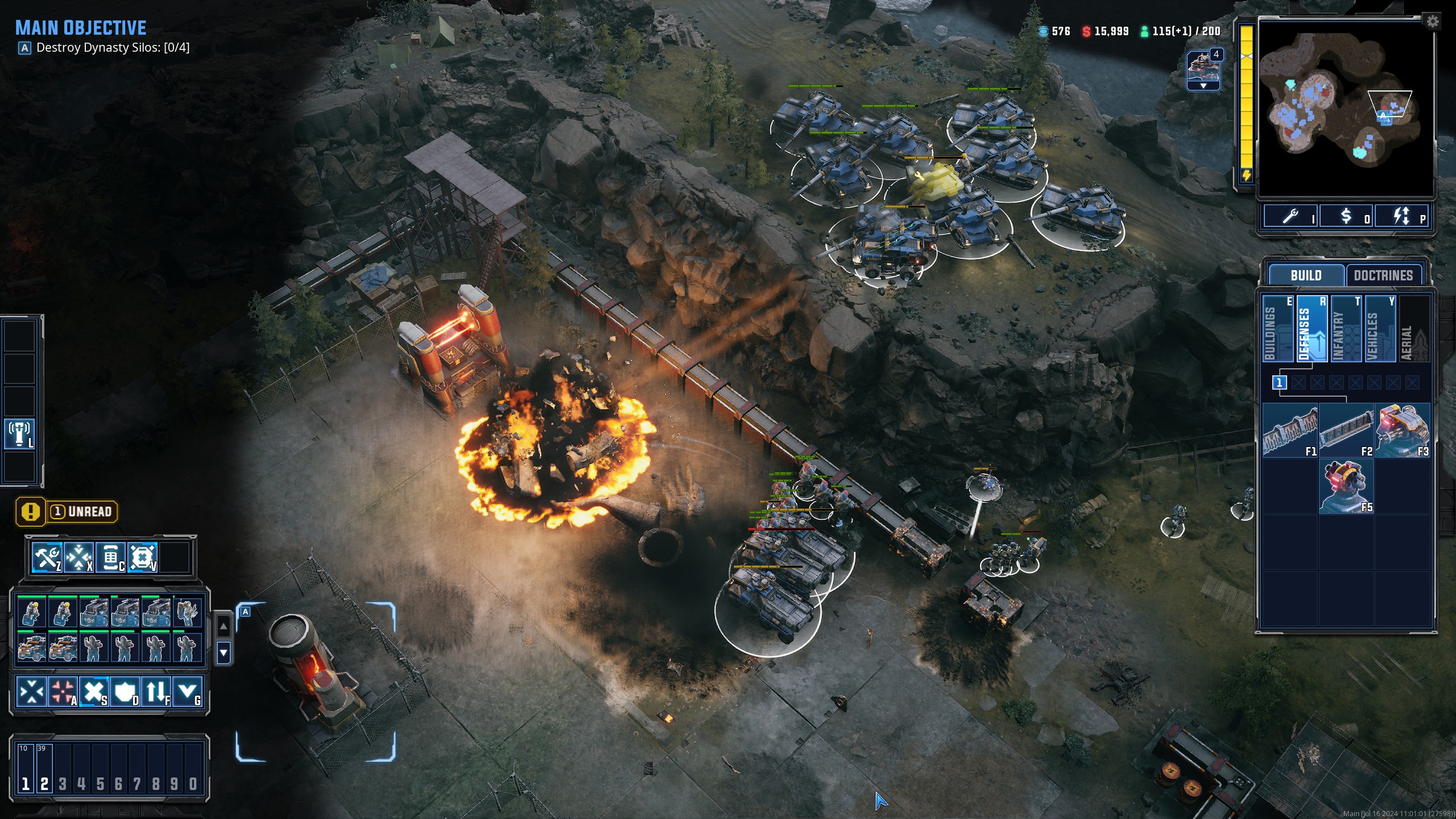
I did exactly this, because I have an intense craving for firefights over fields of weird sci-fi resources, explosive base rushes and shouty units. It is, I am happy to report, a very good time. Sadly, it's also merely the briefest of tastes—a little nibble of the campaign, with no skirmishes or multiplayer. And it's going to be over in a few days. Still, it's enough to get your blood pumping, and your heart beating to the rhythm of the aggressive industrial soundtrack. And yes, C&C alumnus and rocktronic maestro Frank Klepacki is one of the composers.
OK, the setup: World War 3 kicked off after the Cuban Missile crisis, the Cold War turned hot and everything went to hell. Humanity survived the nuclear war, but it set the scene for a new conflict. It's now 1997, and in the radioactive fallout a new plant has been appearing: tempest. Basically, it's tiberium. Fighting for control over tempest are the Global Defense Force and the Tempest Dynasty, who are not identical to but are certainly analogues of C&C's GDI and Brotherhood of Nod. A third faction is also waiting in the wings, but has yet to be revealed.
I kicked things off with the GDF mission, which has a classic premise. A GDF base is under assault, so I need to rush in, save it, and then secure the tempest fields for fun and profit. Lots of units and features are unavailable—it seems to be a very early mission, naturally—but there's still plenty to get to grips with.
Knowledge is firepower
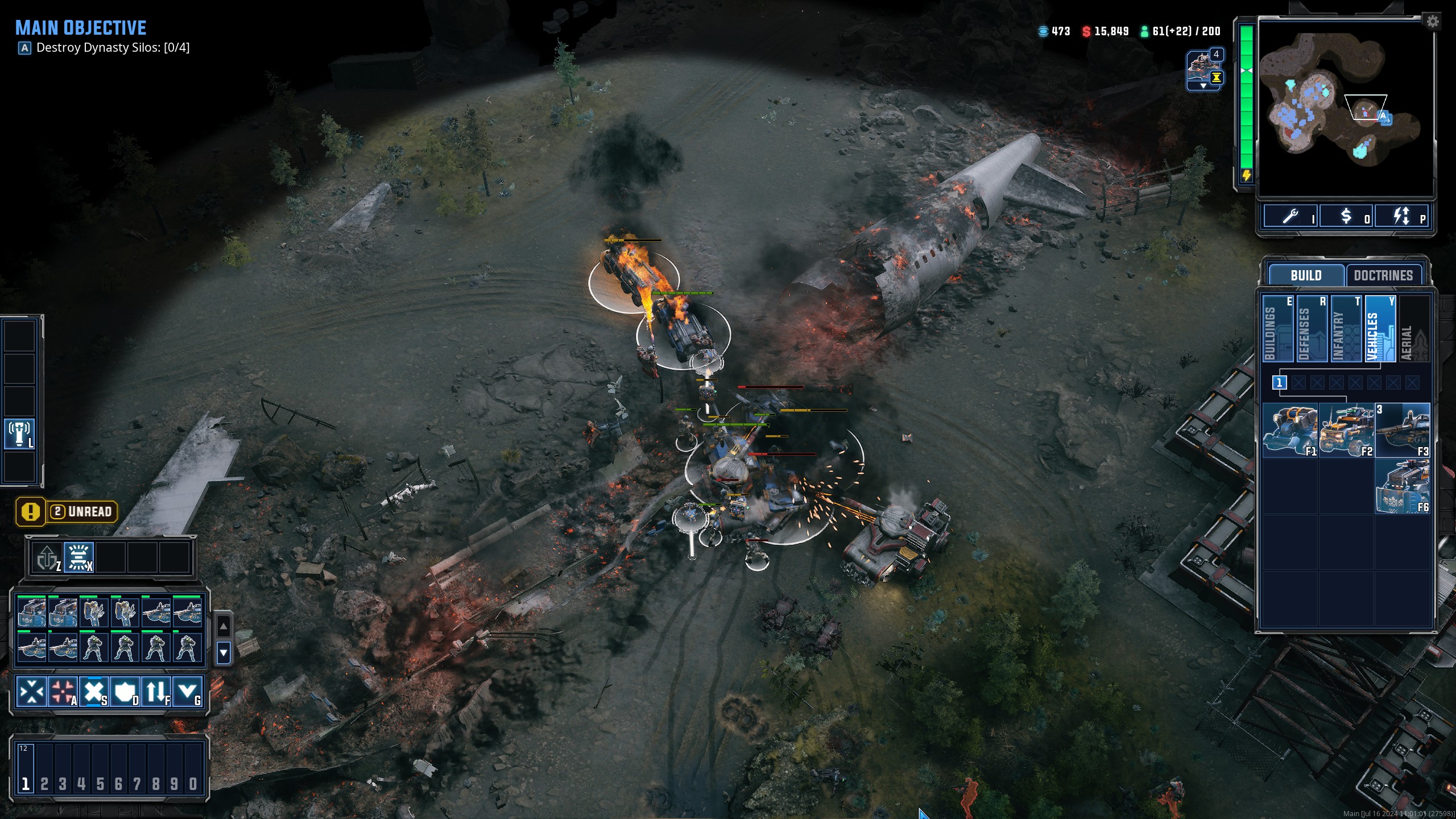
The GDF is all about communication and intel. The Sentinel scout vehicle, for instance, can switch to smart marking rounds, which gathers intel on infantry it's firing on, at the cost of some lethal power. When the enemy unit is killed, the intel is stored, enabling players to spend it on countermeasures—sadly not present in the demo mission. This also synergises with other units' abilities, like the Hunter tank, which features a networked gun that performs better against marked targets.
The GDF is all about communication and intel.
After rescuing the base, I quickly started building up a veritable army and expanding, creating smaller outposts near tempest fields—using the support beacon support power, one of several each faction can deploy—where my harvesters could collect the precious plant and bring it back to refineries, all while the Tempest Dynasty harassed me from their base to the south. With gatling and grenade turrets, as well as guard towers erected by my engineers, I turtled up, readying myself for the big push to the bottom of the map.
The biggest gaming news, reviews and hardware deals
Keep up to date with the most important stories and the best deals, as picked by the PC Gamer team.
One thing I appreciated across my many demo firefights was the TTK (time to kill). Even my basic scout infantry could take a decent beating, while enemies with rocket launchers could withstand a concentrated attack for long enough to get off a rocket or two, making even small numbers of them feel like legitimate threats. My Hunter tanks, meanwhile, got into plenty of drawn out slugfests. With coordination, however, everything can go down in seconds, and everything has a hard counter.

I wasn't having to constantly replenish my army, but at the same time I did feel vulnerable, and mistakes were punished—like when I recklessly sent my entire force to my foe's front door, where they were greeted by a wall of rocket launchers and flamethrowers. Too warm a welcome for me. I lost half of my infantry and most of my vehicles were in rough shape, forcing me to do a recruitment drive before coming at it from a different angle.
They might not be as flashy as drone operators, who use their drones to take out armour and aerial targets, as well as making higher terrain visible, or as punchy as the explosive grenadiers, who can take out groups of infantry and building with their deadly payloads, but for me the MVP was the humble engineer.
Despite being non-combatants, engineers are vital. During my big push south, I used one to capture a Tempest Dynasty mobile harvesting rig (more on them later), and then protect the haul by erecting a guard tower, where my infantry could huddle inside during the inevitable retaliation. These diligent tech-heads also made sure my turrets remained healthy, as well as keeping my vehicles in tip top shape. And while they weren't used in this mission, abilities like mine removal and stealth detection are likely going to be invaluable.
Killer cookout
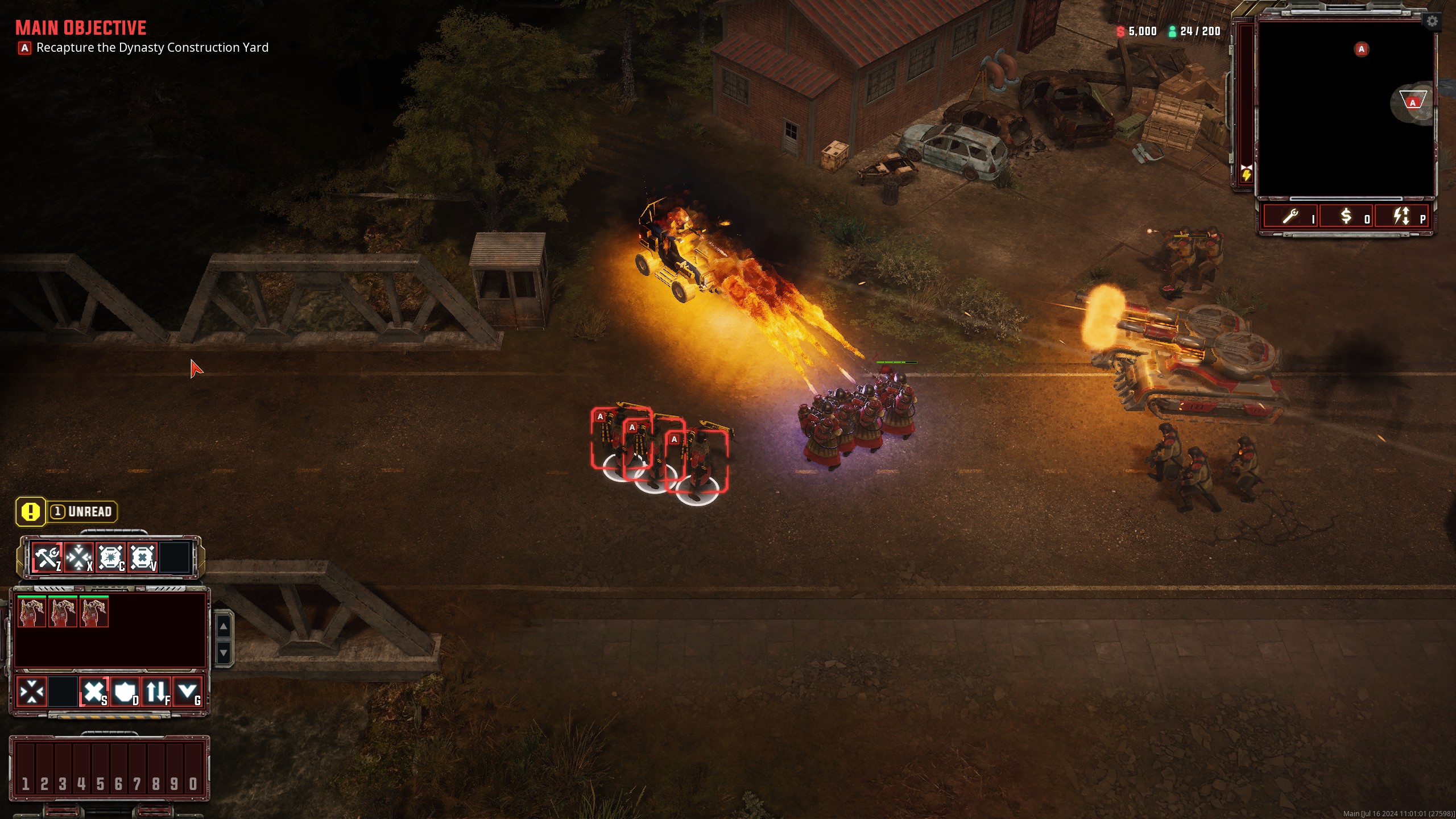
Switching sides to the Tempest Dynasty, things heated up considerably—mainly thanks to the faction's penchant for barbecuing. Right off the bat, I was given a bunch of Ignitors, whose flamethrowers made short work of enemy infantry. These mad lads also carry thermobaric grenades—only available later, unfortunately—and are particularly useful when assaulting bases with garrisoned units, since their flamethrowers ignore the defences these structures normally provide. Once I captured what would become our main base, I plonked down some flamethrower turrets to keep the cookout going.
The Tempest Dynasty is mobile and adaptable, emphasised by units like the salvage van, which repairs vehicles in its radius, but which can also be turned into a salvage center, a building that can switch from repairing vehicles to salvaging them—both allies and enemies—netting you cash in return. The Tempest rig, meanwhile, is a massive mobile harvesting refinery, moving around on detachable harvester treads that can also bring tempest to the rig to be refined.
Some neat building quirks add to the faction's flexibility, like the unique ability attached to its power plants, which overclocks nearby buildings, augmenting their production capabilities at the risk of some damage. Buildings can also be upgraded, not only enhancing their ability to churn out troops and vehicles, but also lending them new tricks, including defensive capabilities.
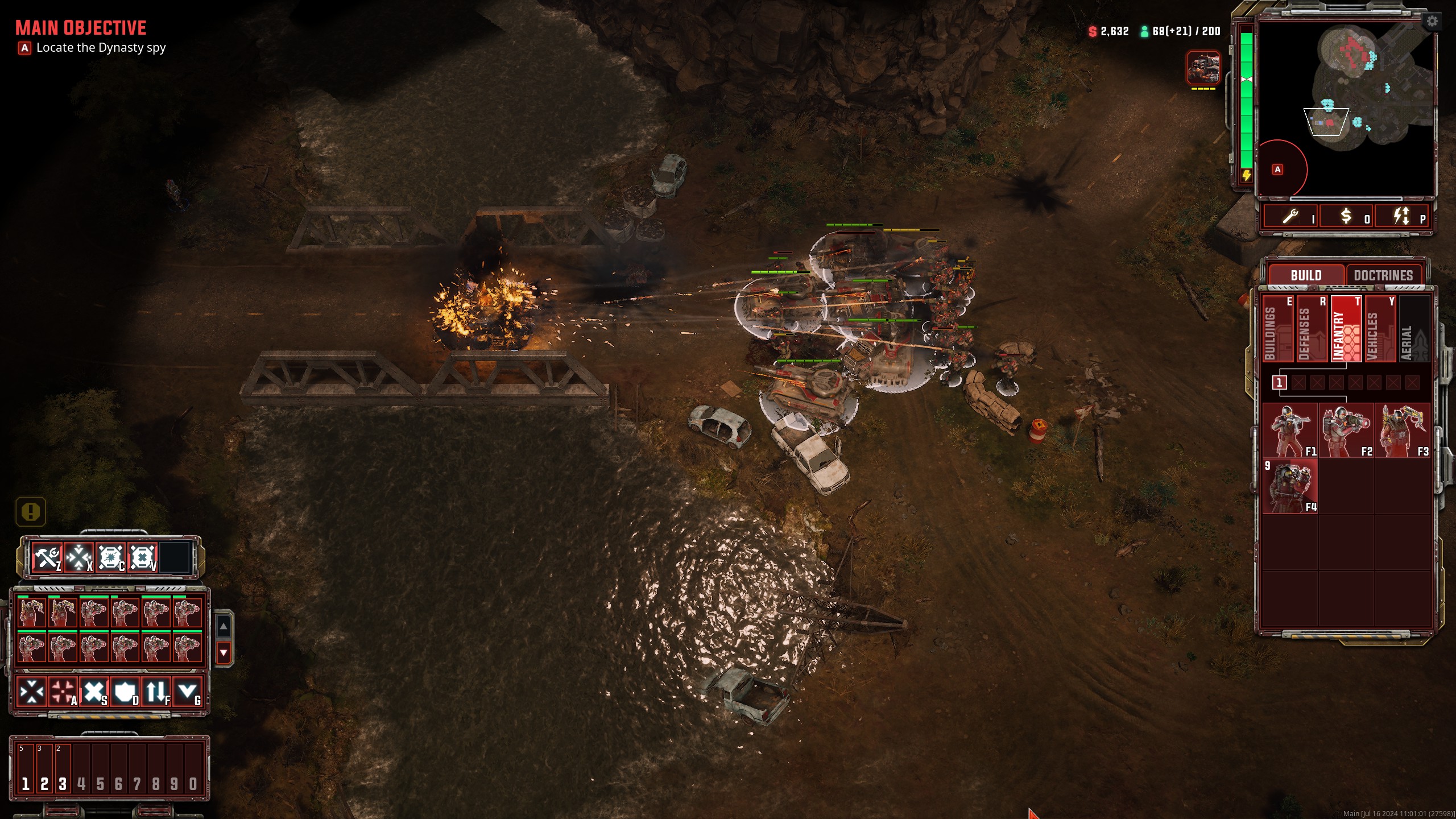
While I missed the GDF's networked tanks, the abundance of explosive firepower made the Tempest Dynasty a blast to muck around with. A group of missile troopers can obliterate any beefy vehicle in their path, and I'm convinced that there's nothing more satisfying in an RTS than spewing out flesh-cooking flames, so the Ignitors quickly became a fave. The technician, the Tempest Dynasty's engineer, also has the ability to place mines, not just remove them, which came in very handy when facing constant pokes from the GDF—certainly more so than the engineer's (still helpful) guard tower ability.
Tempest Rising is shaping up to be a dream RTS.
Of the two, the Tempest Dynasty felt a touch more powerful, but more importantly its unique hooks were just a bit more fun to play around with—I had more interesting decisions to make and more engaging mechanics to get to grips with. But these missions are close to the start of the campaign, before you get access to specialist units, faction-augmenting doctrines, or the ability to use things like GDF intel or Tempest Dynasty combat plans (which enhance a specific aspect of battle, like harvesting, repairing or just being super aggro), so we're far from getting the full picture of each faction's capabilities.
The demo was an extremely convincing showcase, regardless, and Tempest Rising is shaping up to be a dream RTS for those of us who still feel wistful about the halcyon days of Blizzard and Westwood's golden age titans. During this RTS resurgence that we've been experiencing for the last few years, a lot of developers have been trying to push the genre forward and explore new ideas, and while that innovation is absolutely worthwhile, so far the results have been fairly middling. Tempest Rising's strategy is safer, but I think there's a better chance of it paying off.
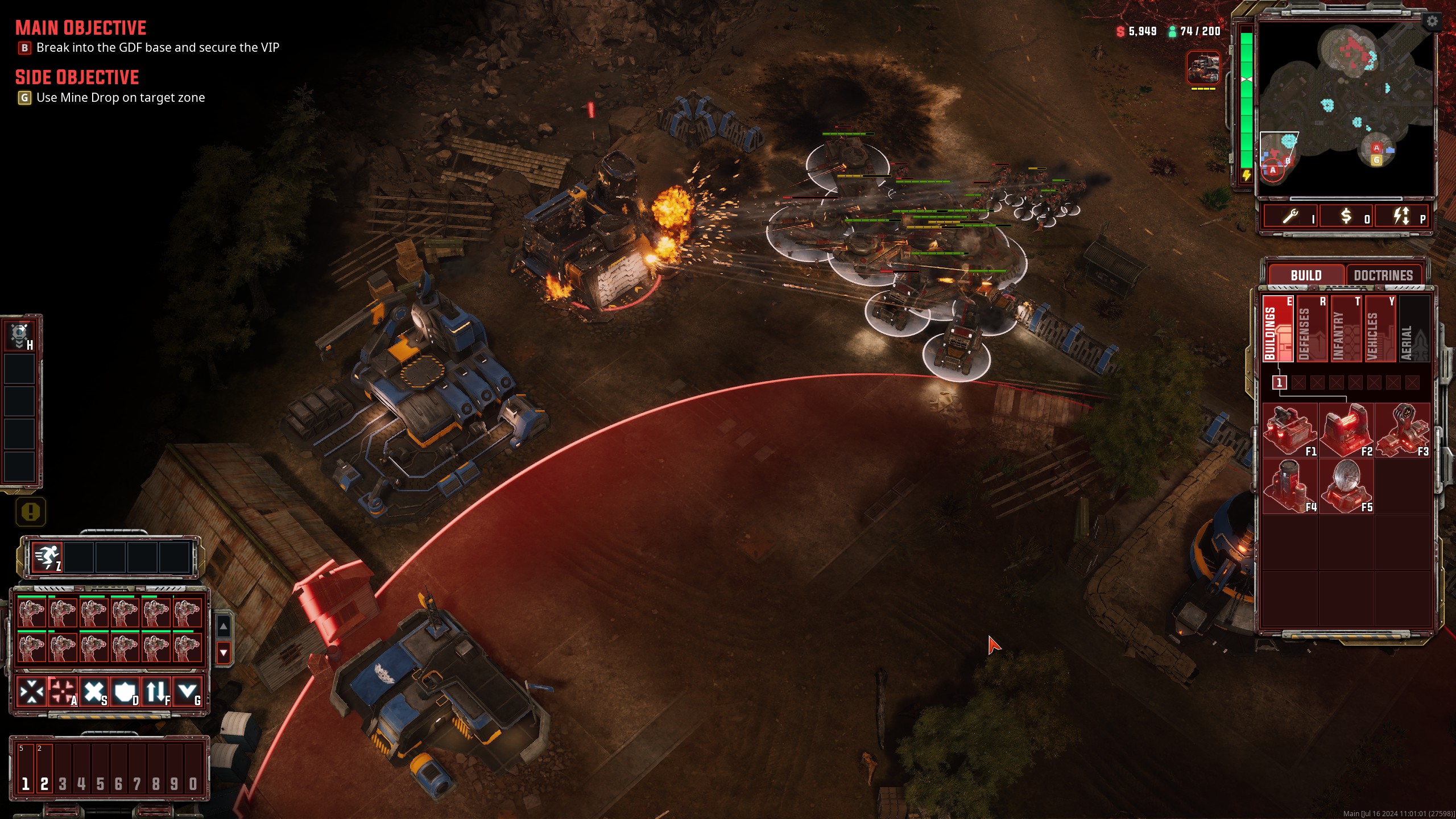
It's worth noting, too, that while the sensibilities are old school, Tempest Rising doesn't actually look old. The aesthetic harkens back to classic C&C, but the lighting and effects are enjoyably flashy, while zooming in lets you see how much care has been taken with the fine details bestowed upon the buildings and units. It's a damn fine looking game. Importantly, the aesthetics don't get in the way of more practical concerns—every unit looks distinct, and even when everything is kicking off there's still an abundance of clarity.
My wishlist of tweaks is surprisingly short. I'd love an attack and move command because I hate to see my well-trained soldiers suddenly forget how to shoot whenever they break into a jog; the AI could do a better job of picking targets, so a bunch of engineers don't all try to disarm the same mine, or my Ignitors don't ignore the flammable humans and focus on the massive tank; and I wish the music was louder. That last one is a bit nitpicky, but the music is so much quieter compared to the din of battle, and it deserves to be heard. On the plus side, there's a jukebox option that lets you select any of the eight tracks in the demo. It's a good selection, but do yourself a favour: put Klepacki's Leading the Assault on repeat. It's an absolute banger.
The Tempest Rising demo will self-destruct on July 22, but at least that gives you the whole weekend to enjoy it.

Fraser is the UK online editor and has actually met The Internet in person. With over a decade of experience, he's been around the block a few times, serving as a freelancer, news editor and prolific reviewer. Strategy games have been a 30-year-long obsession, from tiny RTSs to sprawling political sims, and he never turns down the chance to rave about Total War or Crusader Kings. He's also been known to set up shop in the latest MMO and likes to wind down with an endlessly deep, systemic RPG. These days, when he's not editing, he can usually be found writing features that are 1,000 words too long or talking about his dog.